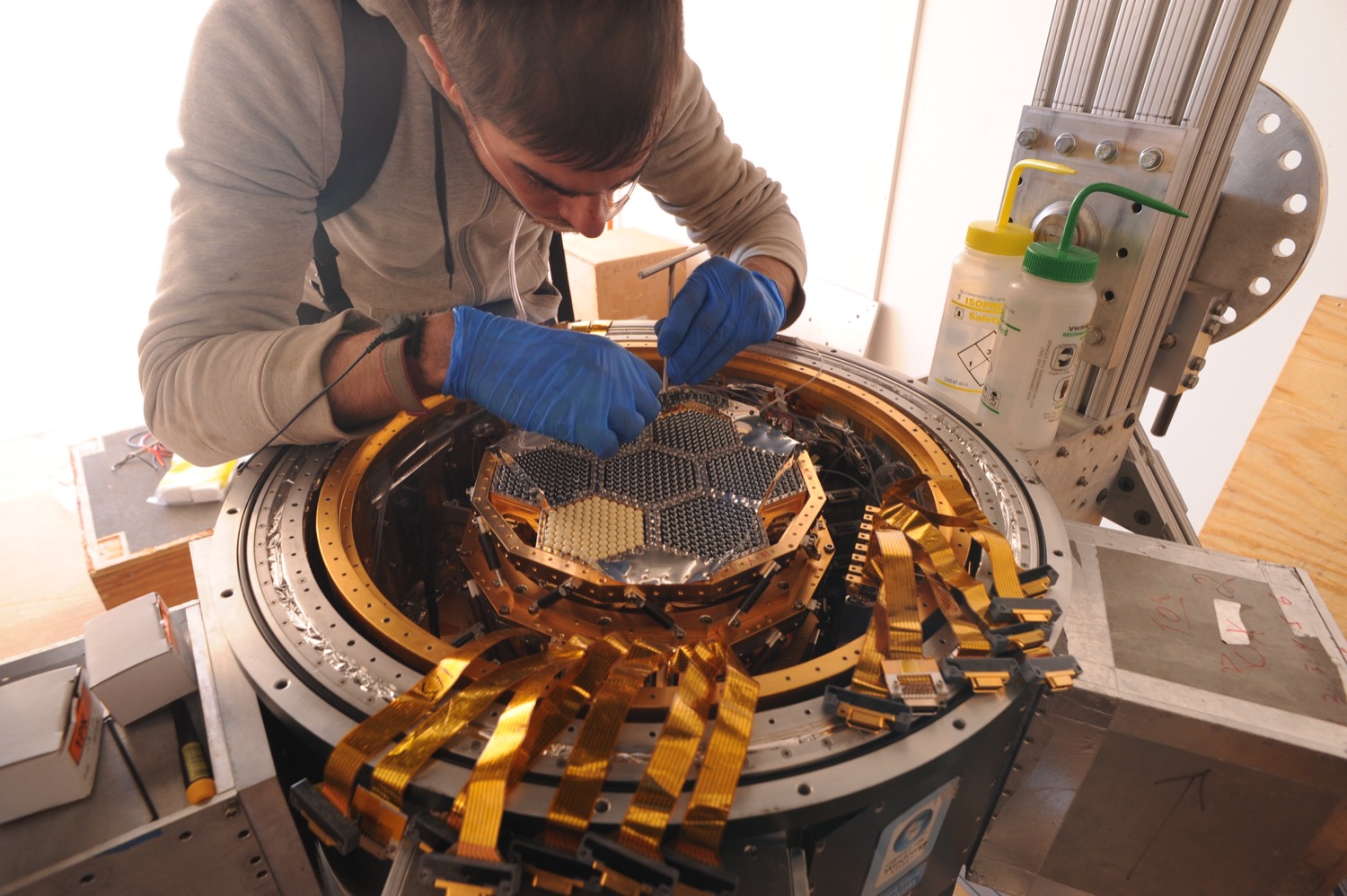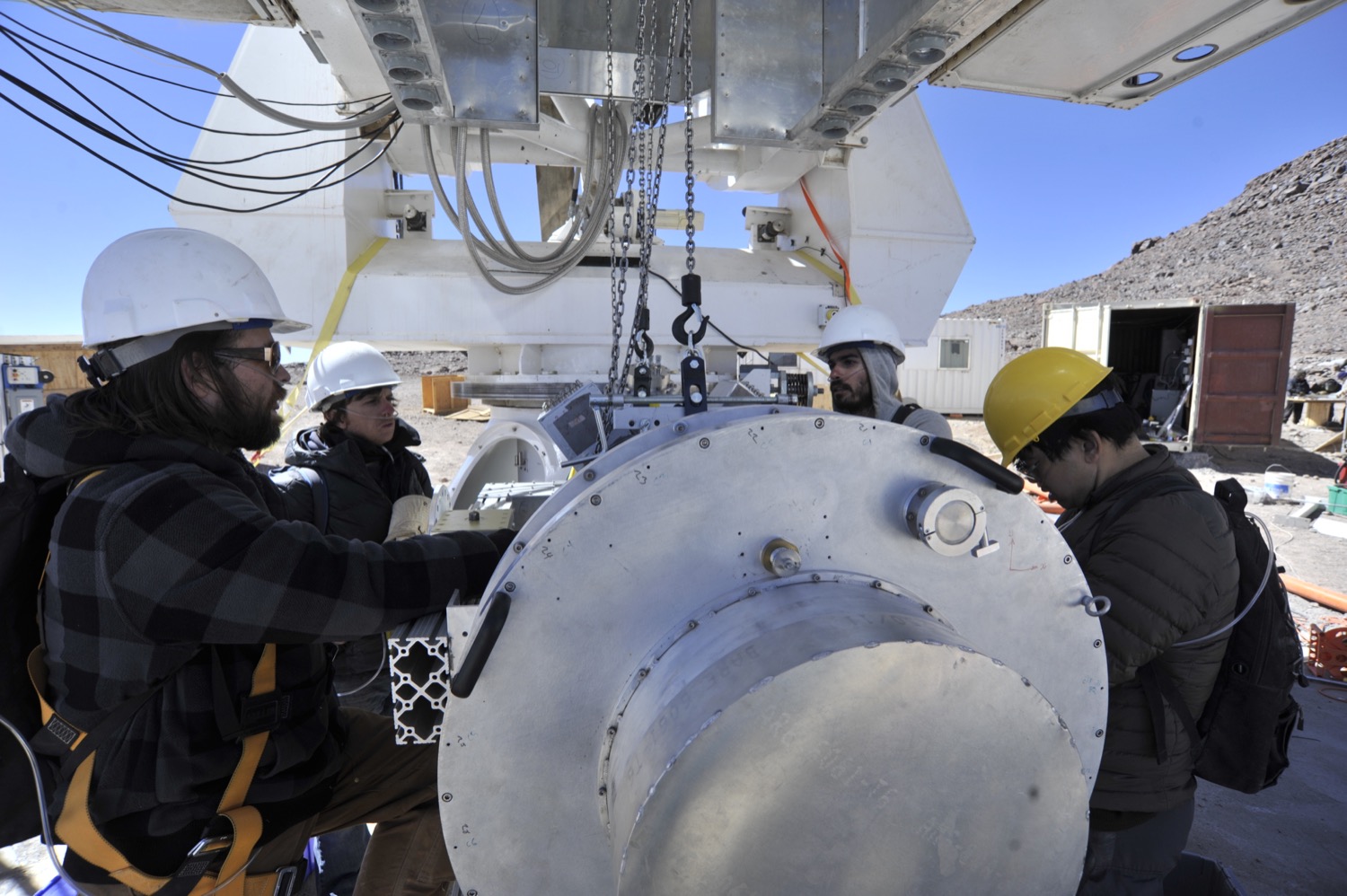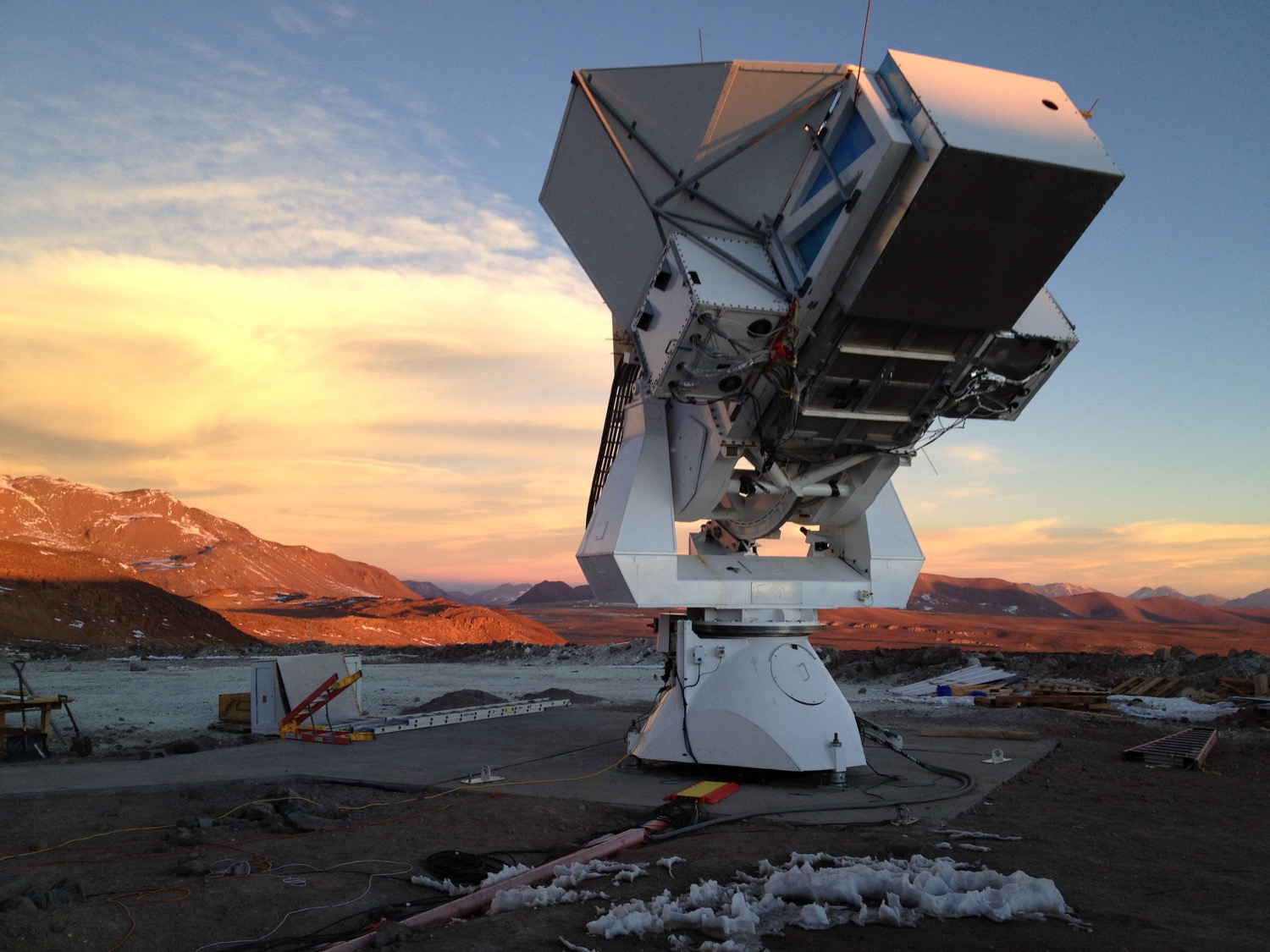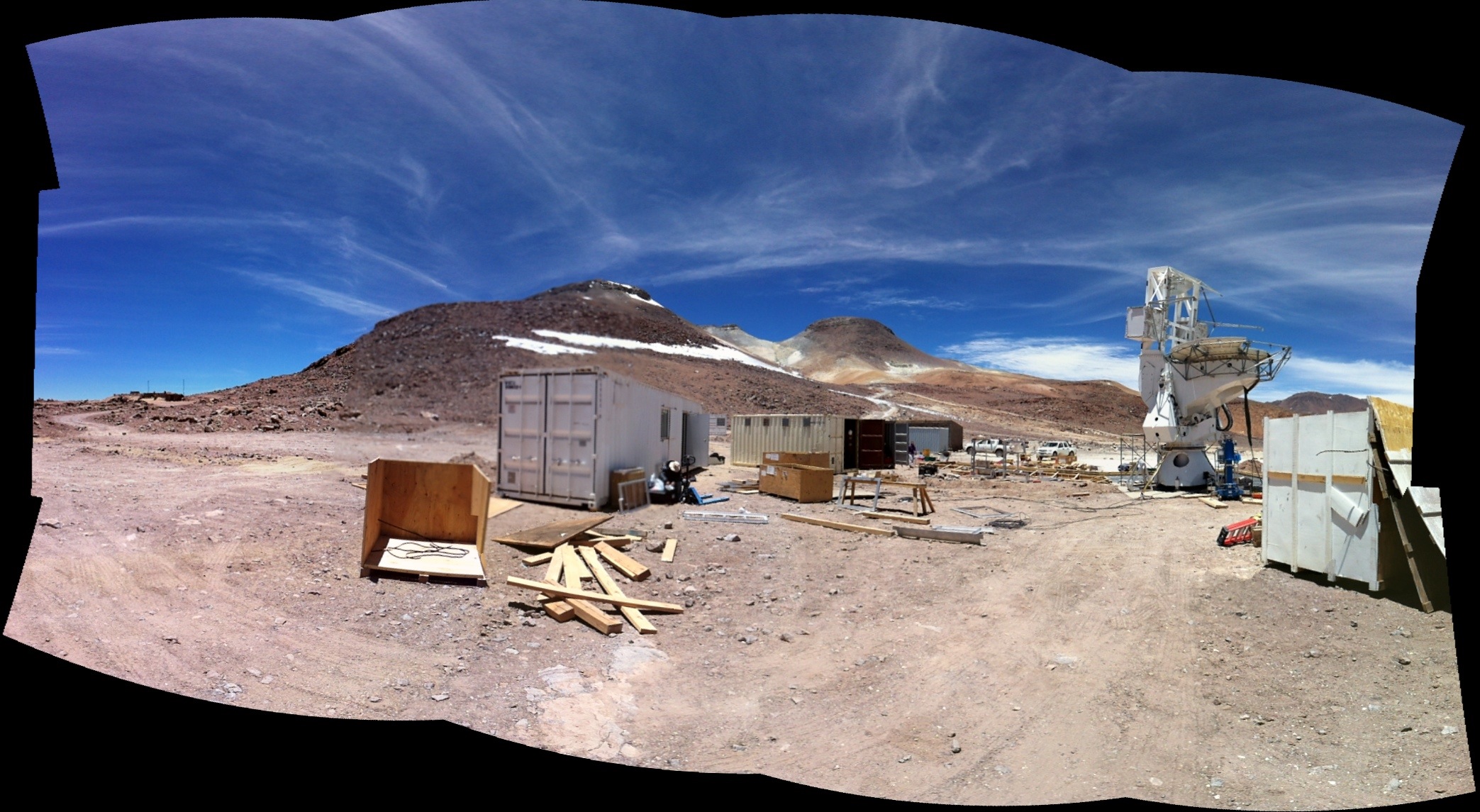Somehow, I’ve avoided starting a blog for all these years. Now seemed like a good time to start one as I’m about to board a plane to Antarctica for my research. Hopefully, Antarctica will provide plenty of opportunities for pretty pictures and exposition on the grueling fieldwork that comes along with trying to launch a balloon-borne experiment. But more on that later. First, I feel I need to write some historical posts.
My first field deployment was to the Cedar Flat site in the Inyo Mountains of California. We first integrated the POLARBEAR experiment there for an engineering run on one of the CARMA array pads. It was a great time and I have lots of fond memories of the excellent gas station breakfast burritos, outings to the thermal baths, bumpy drives to the pond on dirt roads, the surprisingly good food Chef Cecil put together for us for dinners, not to mention the gorgeous drive through Yosemite to get there. But most importantly, our team really pulled together and got the instrument to work beautifully. However, that first deployment had the advantage that I could jump in my car and drive back home every few weeks. My first real, you won’t see home for at least a month, exteme location deployment was when we then took the POLARBEAR receiver to its home in Chile.
There are currently two sites in the world where folks like me deploy millimeter telescopes: Chile’s Atacama Desert and the South Pole. The reason is because water vapor absorbs millimeter waves, so to have as little between us and what we’re trying to observe, we go to very high and dry locations. POLARBEAR is located at an altitude of 5,200 meters in the incredibly dry Atacama Desert. Using oxygen at these altitudes is a pretty good idea (otherwise, you quickly become somewhat stupid…I have some good stories). The South Pole is surprisingly up there as well, at about 2,800 meters. While wearing oxygen isn’t necessary there, the cold provides other challenges.
When I arrived in Chile, a concrete pad for the telescope had been built, the telescope itself was nearly assembled, and we’d just gotten power going at the site. The list of things to achieve to go from that state to having the receiver integrated and a fully running experiment was quite long. One of my favorite photos from that deployment was this one of Mike and I after our first day on the site. We looked surprisingly happy despite the mountain of work ahead of us:
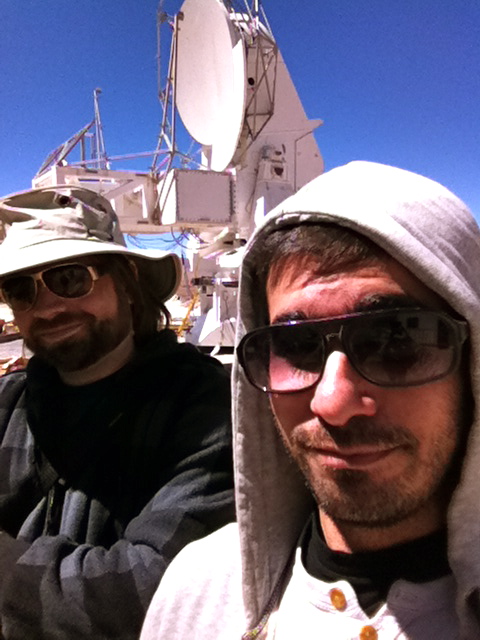
One of the big milestones during our first few weeks there was getting concrete poured for a path between our lab container (sea containers normally used for shipping are the quickest way to get indoor workspace in a remote site…our lab container ended up being something like a double-wide sea container with an extra bit added to the top for a hoist) and the telescope. If we didn’t get that done, improvising to get the relatively heavy, extremely delicate receiver to the telescope would have been interesting.
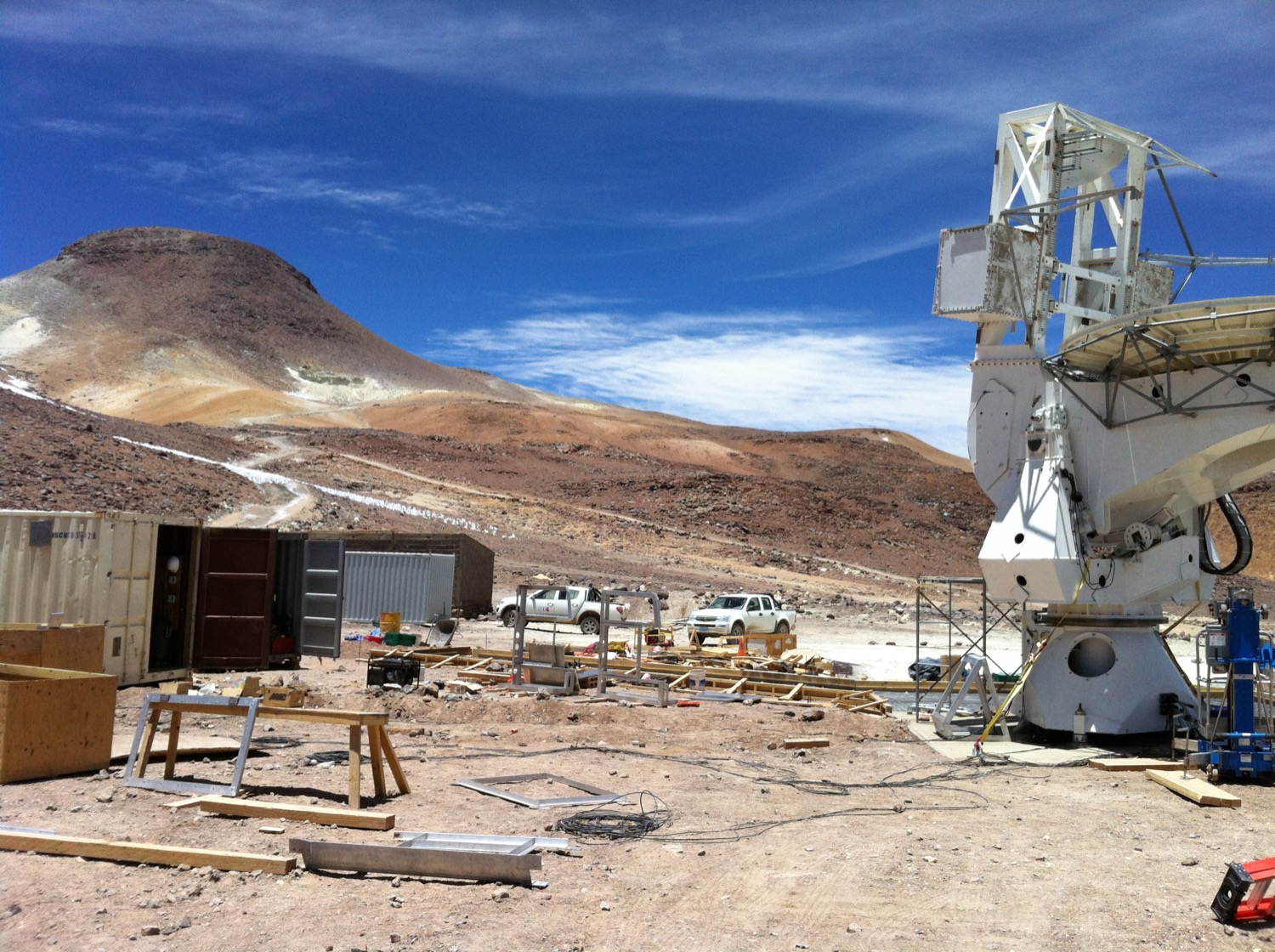
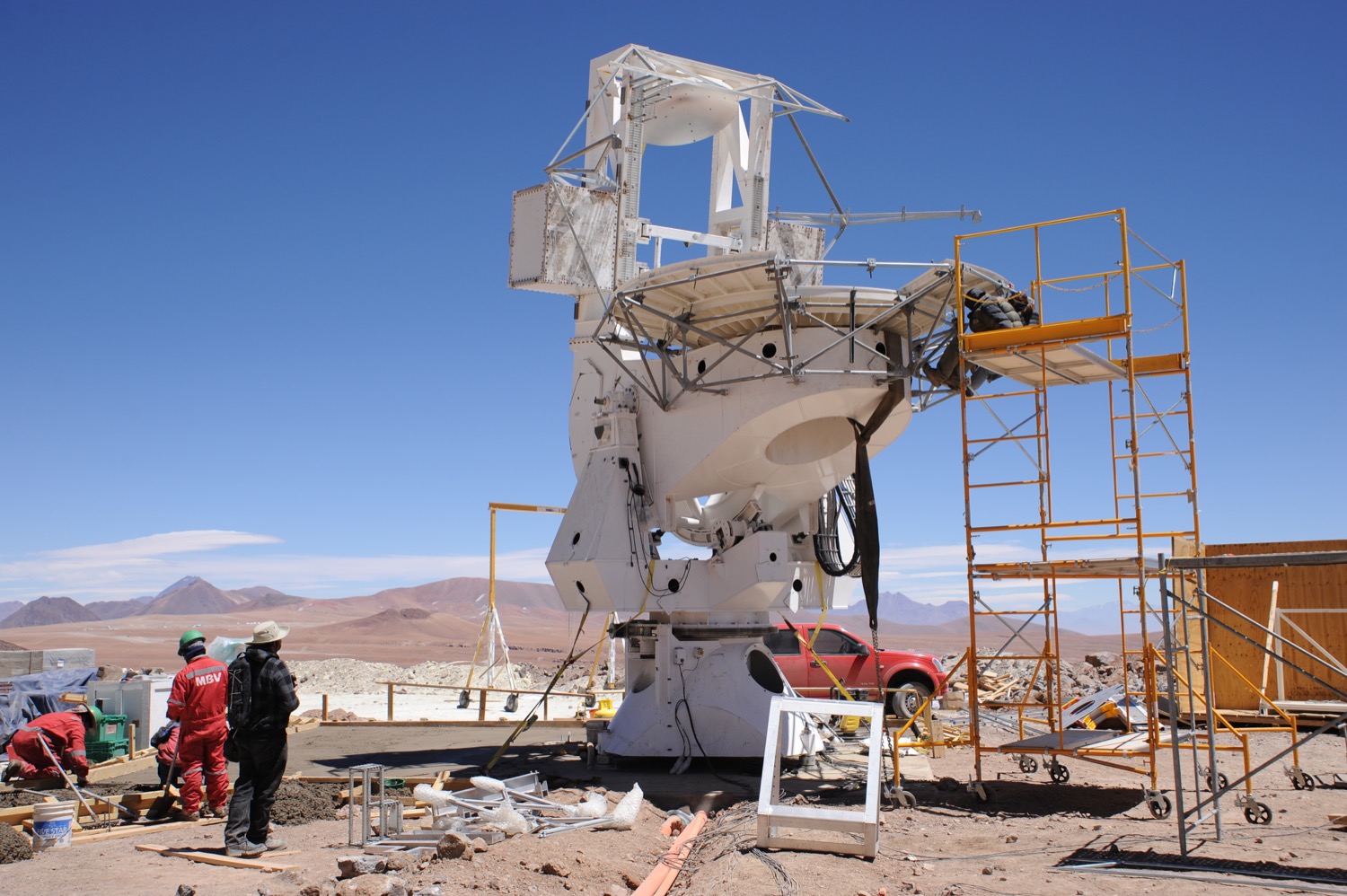
After that, I pretty much put my head down and lived in the lab container all day assembling the focal plane and the receiver, so I unfortunately don’t have as many photos. I wish I blogged more regularly then (part of the motivation to starting a blog now) because it’s difficult to capture the excitement and roller-coasters of emotions that accompany a field campaign. In the absence of a good text record or photos of my own, here are a few photos from co-workers showing some of the highlights of my time there:
